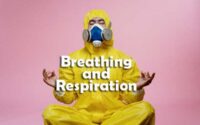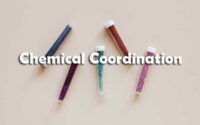Mineral Nutrition Questions and Answers
1. Which of the following is not non-essential element for plants.
A. Potassium
B. Sodium
C. Aluminium
D. Cobalt
2. Element involved in nitrogen fixation is-
A. Zinc
B. Iron
C. Boron
D. Chlorine
3. X is essential micronutrient required in leaves and roots. Major function of ‘X’ is to perform metabolism of urea and ureids and its deficiency causes leaf tip necrosis. It is-
A. Sulphur
B. Zinc
C. Magnesium
D. Nickel
4. Source of mineral nutrients is-
A. Soil
B. minerals obtained from rocks
C. rocks
D. all of these
5. Hydroponics is-
A. growing plants wihtout soil
B. growing plants in water
C. growing plants without organic matter
D. all of the above
6. A metal ion involved in stomatal regulation is-
A. Iron
B. Potassium
C. Magnesium
D. zinc
7. Leghaemoglobin helps in-
A. nitrogen fixation
B. protecting nitrogenase from O2
C. destroying bacteria
D. transport of food in plants
8. Identify the role of lectins in formation of root nodules in legumes-
A. Formation of shepherd’s crook
B. Recognition of compatible Rhizobium by host
C. Formation of peribacterial membrane
D. Formation of infection thread
9. Leghaemoglobin is produced in response to-
A. Respiration
B. fatty acid synthesis
C. N2 fixation
D. Photosynthesis
10. For its action, nitrogenase requires-
A. high input of energy
B. light
C. Mn2+
D. Super oxygen radicals
11. Best defined function of manganese in green plants is-
A. Photolysis of water
B. Calvin cycle
C. nitrogen fixation
D. water absorption
12. One mineral activates the enzyme catalase and the other is a constituent of the ring structure of chlorophyl. These minerals are respectively-
A. iron and magnesium
B. iron and manganese
C. magnesium and manganese
D. calcium and magnesium
13. Micronutrients are-
A. Mn, Ni, Zn
B. O, Cu, B
C. Ca, S, Fe
D. Mg, Mn, Mo
14. The essential element needed for water splitting in photosynthesis leading to o, evolution is-
A. Mo
B. Mg
C. Mn
D. K
15. Which is essential for the growth of root tip?
A. Zn
B. Fe
C. Mn
D. Ca
16. In which of the following all three are macronutrients?
A. Iron, copper, molybdenum
B. Boron, zinc, manganese
C. Nitrogen, nickel, phosphorus
D. Molybdenum, magnesium, manganese
17. A system of rotating crops with legume or grass pasture to improve soil structure and fertility is called-
A. strip farming
B. ley farming
C. shifting agriculture
D. contour farming
18. Which of the following is a group of micronutrients for plants?
A. Fe, Mn, Cu, Mo, Zn
B. Fe, Mn, Cu, 0, C
C. Cu, B, CI, Fe, Ca
D. Ca, Mg, Fe
19. Assertion : Atmospheric nitrogen gas is always fixed by nitrogen-fixing microorganisms.
Reason : Decomposers release nitrogen gas from dead bodies of plants and animals.
A. If both assertion and reason are true and reason is the correct explanation of assertion.
B. If both assertion and reason are true but reason is not the correct explanation of assertion.
C. If assertion is true but reason is false.
D. If both assertion and reason are false.
20. Which of the following is not a role played by potassium in plant growth?
A. Translocation of carbohydrates
B. 6 Maintaining anion-cation balance
C. Opening and closing of stomata
D. Synthesis of protein
21. Which of the following microbes produces nitrogen-fixing nodules in non leguminous plants?
A. Rhizobium
B. Azotobacter
C. Frankia
D. Pseudomonas
22. Assertion : Nitrogen is one of the most essential elements of human body.
Reason : All types of prokaryotic organisms are able to fix nitrogen.
A. If both assertion and reason are true and reason is the correct explanation of assertion.
B. If both assertion and reason are true but reason is not the correct explanation of assertion.
C. If assertion is true but reason is false.
D. If both assertion and reason are false.
23. Assertion : Soil particles, particularly clay and organic matter in soil, contain negative charges that attract positively-charged ions such as Ca++, K+ and Mg++.
Reason : Essential elements derived from soil are termed as mineral elements while those derived from air or water are known as non-mineral elements.
A. If both assertion and reason are true and reason is correct explanation of assertion.
B. If both assertion and reason are true but reason is not the correct explanation of assertion.
C. If assertion is true but reason is false
D. If both assertion and reason are false
24. During biological nitrogen fixation, inactivation of nitrogenase by oxygen poisoning is prevented by-
A. Carotene
B. Cytochrome
C. Leghaemoglobin
D. xanthophyll
25. The oxygen evolved during photosynthesis, comes from water molecules. Which one of the following pairs of elements is involved in this reaction?
A. Magnesium and molybdenum
B. Magnesium and chlorine
C. Manganese and chlorine
D. Manganese and potassium
26. Nitrogenase enzyme is a-
A. magnesium-iron protein
B. molybdenum-iron protein
C. iron-copper protein
D. nickel-iron protein
27. Necrosis (die-back) of the tip of young leaves is caused due to the deficiency of-
A. Manganese
B. Copper
C. Iron
D. zinc
28. The element responsible for the ring structure of chlorophyll and maintenance of ribosome structure is-
A. Ca++
B. Mg+
C. S
D. K+
29. Die back’ disease is caused by the deficiency of-
A. Zinc
B. Copper
C. Manganese
D. Boron
30. The enzyme nitrogenase is a-
A. Cu-Fe protein
B. Ni-Fe protein
C. Ni-Cu protein
D. Mo-Fe protein
31. The element related with nitrogen metabolism is
A. Manganese
B. Magnesium
C. Zinc
D. molybdenum
32. ________ is essential for nitrogen metabolism including the process of nitrogen fixation.
A. Fe
B. Se
C. Mo
D. Ca
33. The bacterium which converts ammonium compounds into nitrites is-
A. Nostoc
B. Nitrosococcus
C. Nitrobacter
D. Nitrocystis
34. Which of the following is a bacterium involved in denitrifiication?
A. Azotobacter
B. Pseudomonas
C. Nitrosomonas
D. Nitrobacter
35. Most plants obtain their nitrogen from the soil in the form of-
A. free nitrogen gas
B. nitrite
C. nitric acid
D. nitrates
36. The function of leghaemoglobin in the nodules of legumes is-
A. oxygen removal
B. inhibition of nitrogenase activity
C. expression of nif gene
D. nodule differentiation
37. Which one of the following is not a micronutrient for plants?
A. Magnesium
B. Boron
C. Molybdenum
D. Zinc
38. Which of the following groups of minerals are micronutrients?
A. Magnesium, Manganese, Copper, Boron and Phosphorus
B. Manganese, Copper, Magnesium, Zinc and Boron
C. Nitrogen, Potassium, Manganese, Copper and Iron
D. Iron, Manganese, Copper, Molybdenum and Zinc
39. When one element is involved in opening and closing of stomata, the other helps to maintain the ribosome structure. They are-
A. potassium and calcium
B. phosphorus and sulphur
C. potassium and magnesium
D. iron and magnesium
40. Plants could be grown to maturity in a defined nutrient solution was demonstrated for the first time by-
A. Priestley
B. Von Sacchs
C. Van Niel
D. Ingenhausz
41. the process of conversion of nitrogen to ammonia by the microbes is described as-
A. nitrification
B. denitrification
C. nitrogen fixation
D. Haber’s process
42. Function of zinc in plants is-
A. sugar transport
B. activation of enzymes
C. cell elongation
D. pollen germination
43. Identify the physiological function of two microelements. Of them, the former is required for synthesis and the latter for oxidation of lAA respectively.
(i) Constituent of chlorophyll molecule
(ii) Maintenance of cell turgidity
(iii) Splitting of water in photosynthesis
(iv) Cofactor for carboxy peptidase
(v) Component of methionine
A. (ii), (v)
B. (v), (i)
C. (iv), (ii)
D. (iv), (iii)
44. Deficiency symptoms of nitrogen and potassium are visible first in-
A. senescent leaves
B. young leaves
C. buds
D. roots
45. Free living nitrogen fixing aerobic bacterium is-
A. Rhodospirillum
B. Anabaena
C. Beijerinckia
D. Nostoc
46. Which of the following elements is relatively immobile in plants?
A. Nitrogen
B. Potassium
C. Sulphur
D. Phosphorus
47. The most abundant intracellular cation is-
A. K+
B. Na+
C. Ca2+
D. H+
48. Besides paddy fields, cyanobacteria are also found inside vegetative part of-
A. Psilotum
B. Cycas
C. Pinus
D. Equisetum
49. Consider the following statements-
(i) Sulphur is present in two amino acids cysteine and valine
(ii) Lower level of N, K, S and Mo causes inhibition of cell division
(iii) Microbe that produces nitrogen fixing in the roots of non-leguminous plant Alnus is Frankia
(iv) Denitrification is carried bacteria by Nitrosomonas and Nitrobacter
Of these statements:
A. (i) and (ii) alone are correct
B. (i) and (iii) alone are correct
C. (ii) and (ii) alone are correct
D. (ii) and (iv) alone are correct
50. Minerals involved in carbohydrate translocation, maintaining ribsome structure and activation of nitrogenase are respectively-
A. Mn, B, Ca
B. Ca, Mg, Mo
C. OB, Mg, Mo
D. B, Mn, Mo



